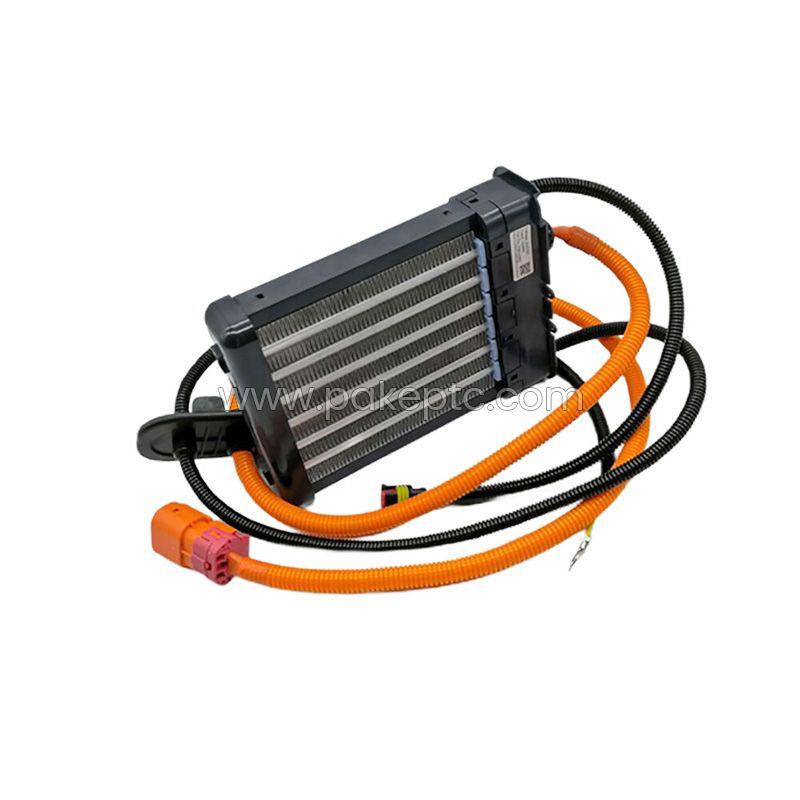In the modern automotive industry, PTC heaters have emerged as a crucial component for enhancing vehicle comfort and efficiency. This comprehensive guide explores everything you need to know about PTC heaters for vehicles, from their technology and benefits to installation and maintenance. By the end of this article, you'll understand why PTC heaters are becoming the preferred choice for automotive heating solutions.
A PTC (Positive Temperature Coefficient) heater is an advanced heating element that utilizes ceramic materials to produce heat. Unlike traditional heaters, PTC heaters increase resistance as they get hotter, which allows them to self-regulate their temperature. This unique property makes them highly efficient and safe for use in vehicles.

PTC heaters operate using ceramic stones that generate heat when an electric current passes through them. As the temperature of the ceramic stones rises, their electrical resistance increases, causing the current to decrease. This self-regulating mechanism prevents overheating and maintains a consistent temperature, ensuring optimal performance.
PTC heaters are renowned for their energy efficiency. Their self-regulating nature means they only use the necessary amount of energy to maintain the desired temperature, reducing power consumption and improving overall vehicle efficiency.
Safety is a paramount concern in automotive applications. PTC heating technology offer superior safety features compared to traditional heaters. The self-regulating mechanism prevents overheating, reducing the risk of thermal runaway and potential fire hazards.
PTC heaters provide rapid heating, quickly bringing the cabin temperature to a comfortable level. This is particularly advantageous in cold climates, where fast defrosting and warming are essential for driver and passenger comfort.
The robust construction of PTC heaters ensures long-lasting performance. The ceramic materials used in these heaters are resistant to wear and tear, making them durable and reliable over extended periods.
With fewer moving parts and a simple design, PTC heaters require minimal maintenance. This reduces the need for frequent repairs and replacements, lowering the overall cost of ownership.
Installing a PTC heater in a vehicle requires careful planning and consideration. Here are the key steps involved in the installation process:
Determine the heating requirements of the vehicle, including the desired temperature range and the areas that need heating. This will help in selecting the appropriate PTC heater model and size.
Choose a PTC heater that meets the vehicle's heating requirements. Consider factors such as power rating, size, and mounting options to ensure compatibility with the vehicle's design.
Prepare the installation site by cleaning and inspecting the area where the PTC heater will be mounted. Ensure there is adequate space and ventilation for the heater to operate efficiently.
Securely mount the PTC heater in the designated location using appropriate brackets and fasteners. Ensure the heater is positioned to maximize heat distribution within the cabin or specific area.
Connect the PTC heater to the vehicle's electrical system, following the manufacturer's instructions. Use high-quality wiring and connectors to ensure reliable and safe electrical connections.
After installation, test the Electric heater to ensure it operates correctly. Check for any issues such as abnormal noises, excessive vibrations, or inconsistent heating. Calibrate the heater to achieve the desired temperature settings.
To ensure the long-term performance and reliability of PTC heaters, regular maintenance is essential. Here are some maintenance tips:
Keep the PTC heater clean by removing dust and debris that may accumulate on the surface. This will prevent blockages and ensure efficient heat transfer.
Regularly inspect the electrical connections for signs of wear or corrosion. Tighten any loose connections and replace damaged wiring to prevent electrical issues.
Periodically check the PTC heater for any signs of physical damage, such as cracks or deformations. Replace damaged heaters promptly to maintain safety and performance.
Monitor the performance of the PTC heater regularly. If you notice any decline in heating efficiency or unusual behavior, investigate and address the issue promptly.
PTC heaters are revolutionizing the automotive heating industry with their energy efficiency, safety, and rapid heating capabilities. By understanding their benefits, applications, installation process, and maintenance requirements, you can maximize the performance and longevity of PTC heaters in your vehicle. Embrace the future of automotive heating with PTC heaters and experience enhanced comfort and efficiency on the road.
Copyright:@2020-2021
Comments Please sign in or sign up to post.
0
0 of 500 characters used